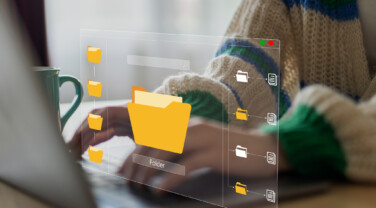1. Write Everything Down, Somewhere that is Visible to Everyone
Having critical project information readily available enables productive work from anywhere, at any time. It is essential for all teams, but especially remote ones.
Explicitly agreeing on standard definitions like the definition of ‘done’ for a task is also crucial, as it allows everyone to have the same understanding of what they are reading and then take action appropriately.
Tools for capturing project tasks and current status include JIRA, Trello, and Azure DevOps.
Tools for documentation include wikis, well-organized file shares, and Microsoft Teams.
2. Consciously Build a Team Culture
Some of the things that ‘naturally-happen’ culturally with in-person teams will not for remote ones. Explicitly deciding as a team what you want your critical cultural standards to be and making sure remote team members can meet them goes a long way.
3. Take Advantage of Video
We find that using video calls for meetings helps facilitate communication between people in different locations. A significant percentage of human connection occurs via body language, and video can make a real difference.
We use always-on video cameras for some teams. This set-up allows a person in one location to turn toward their camera and ask a question, knowing those in the other places see and hear them.
4. Set Team Hours and Standards for Communication Methods
We find it helpful for teams to have each published a set of ‘core hours.’ Meetings can then be scheduled primarily during these times. The number of ‘core hours’ needed varies depending on the type of work the team is doing.
It is useful when teams define the appropriate use of different communication methods (e.g., Email, IM, and Phone) and the expected response time. We have a detailed policy on this at Allata, and it works for us.
Someone who is in the flow of heads-down work rarely stops to answer communication of any type – only if there is a truly urgent need.
5. Take Advantage of Specialized Tools
There are tools available for remote whiteboarding, instant messaging, video conferencing, and other specific requirements that are more common for remote teams. John Salvie, Senior Manager for Allata, discusses a few of his favorites, here.
6. Focus on Life as well as Work
Remote teams can tend to focus exclusively on work since most of the verbal communication is in the context of a specific meeting or a phone call for a particular work-related purpose.
Having a designated online location for ‘Random’ or ‘Water Cooler’ topics and taking time in some meetings to talk about life outside of work can help remote teams bond more quickly. Finding equivalents to the “team lunch” is essential, too. At Allata, groups order into multiple locations and have lunch together via video conference.
In recent days we have created an online meeting called “water cooler” where people can chat with anyone else who is there. We also have a designated time at the end of the day for social hour.
There is much more that goes into building a great remote team, and these are a few tips we have found work well for our teams.



